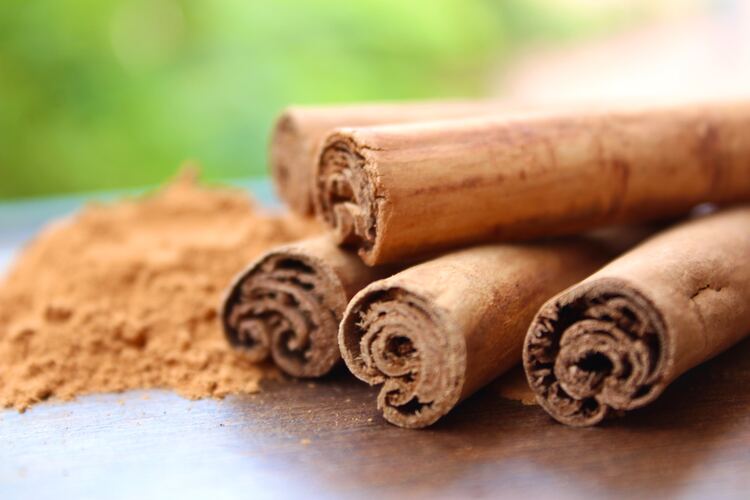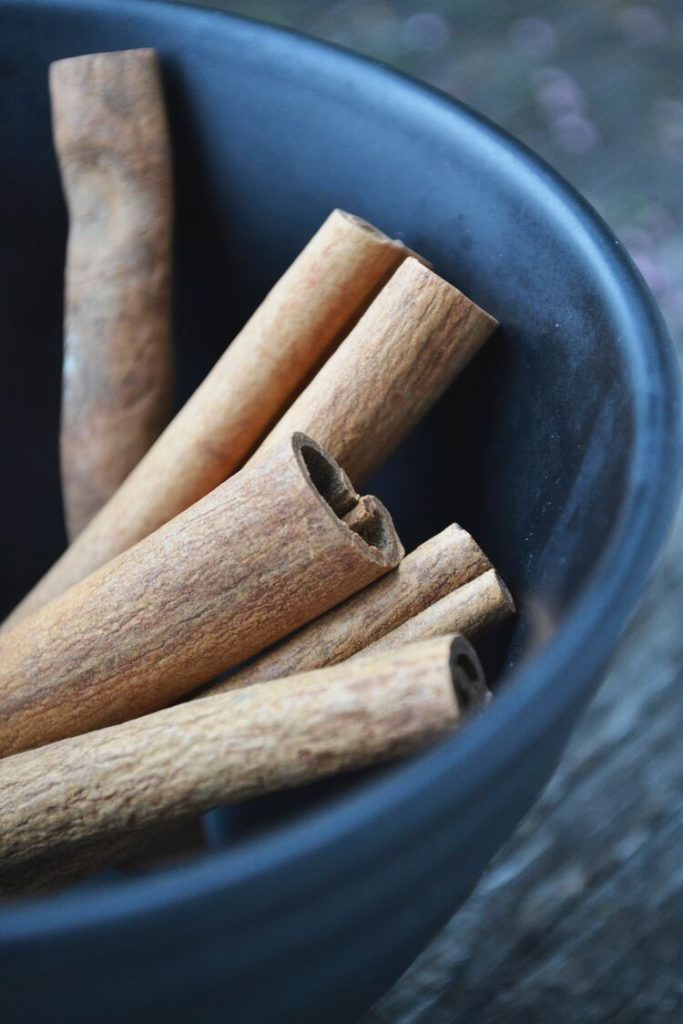Bark teas are a type of herbal tea made from the bark of various trees, delivering distinctive flavors and health benefits.
As you venture into the world of bark teas, you’ll find a wide range of options. Just like any other herbal tea, these tree bark infusions offer varying tastes and properties depending on the type of tree.
In this article, we explore a good number of bark teas. We provide information about their origins, flavor, aroma, health benefits, and customization options.
Please note: This article contains affiliate links, meaning I may earn a commission if you make a purchase by clicking a link. Of course, this comes at no extra cost to you and helps me keep offering readers solid information.

Types of Bark Teas
Bark teas are herbal teas made from the bark of various trees and shrubs.
The bark is essential to a tree’s anatomy, playing a crucial role in its survival, growth, and environmental adaptation. It is a protective outer covering of the tree’s trunk, branches, and roots. The bark serves several important functions for the tree, including protection, transport of nutrients and water, and support.
Tree bark has been used for centuries as a natural remedy, particularly by Native Americans who often foraged in their local environment. They discovered the therapeutic properties of various tree bark and incorporated them into their traditional medicine.
To clarify, these are technically infusions or tisanes. True teas come from the leaves of the Camellia sinensis plant.
Popular types of bark teas include:
Cinnamon Tea
Originating from the bark of the cinnamon tree, Cinnamomum verum, native to Sri Lanka and parts of South Asia, cinnamon tea is known for its sweet and spicy flavor. It is used globally in various culinary dishes and beverages. The warming and fragrant notes of cinnamon characterize the aroma.
Cinnamon tea is believed to have potential health benefits, including helping to regulate blood sugar levels and providing antioxidant properties. To customize the flavor, add honey or a slice of citrus for sweetness and depth.
Cassia Tea
Cassia tea is derived from the bark of the cassia tree, a close relative of true cinnamon. Cassia is grown in various countries, including China and Indonesia. It is used in traditional Chinese medicine. The flavor profile resembles cinnamon, with a slightly stronger and spicier taste. Cassia tea has a warm and aromatic scent.
Health benefits may include blood sugar regulation and antioxidant effects. Customize the flavor with honey, ginger, or a pinch of nutmeg to enhance its taste.
Wild Cherry Bark Tea
Wild cherry bark tea is made from the bark of wild cherry trees native to North America. Indigenous peoples have historically used it for various medicinal purposes. The flavor is mild, with a subtle earthiness and a hint of bitterness. The aroma is understated.
Wild cherry root tea is associated with potential health benefits, such as soothing coughs and promoting respiratory health. You can customize the flavor with a touch of honey or a squeeze of lemon.
Willow Bark Tea
Willow bark tea is traditionally made from the bark of various willow tree species and has historical roots in Native American and European herbal medicine. It has a bitter and slightly astringent taste with a subtle earthy aroma.
Willow bark contains salicin, similar to aspirin, and may help alleviate pain, reduce fever, and combat inflammation. You can add a bit of honey or a slice of ginger to improve the taste.
Slippery Elm Root Tea
Derived from the inner bark of the slippery elm tree, native to North America, slippery elm root tea has a mild, slightly sweet taste with a soothing, mucilaginous texture. The aroma is subtle and earthy.
Slippery elm bark is known for its potential to relieve sore throat, cough, and gastrointestinal irritation. Customize the flavor by adding a bit of cinnamon or honey for extra sweetness.
Balsam Bark Tea
Balsam bark tea is made from the bark of various trees in the balsam fir family, found in North America. It has a mild, woody flavor with subtle pine notes. The aroma is reminiscent of a fresh forest.
Balsam bark tea is often enjoyed for its potential respiratory benefits and as a comforting herbal infusion during cold seasons. Customize the flavor by adding a touch of honey or a sprig of fresh mint.
Birch Bark Tea
Birch bark tea is known for its mild, slightly sweet flavor. It is made from the bark of various birch tree species and is traditionally consumed in several cultures. The aroma is delicate and woody.
Birch bark tea is associated with potential diuretic and detoxifying properties. Customize the flavor with a drizzle of maple syrup or a squeeze of lemon for added complexity.
White Oak Bark Tea
White Oak Root Tea is made from the bark of the white oak tree, native to North America. It has a mild, woody flavor with earthy undertones. White Oak Root Tea is used traditionally in Native American and folk medicine for its potential astringent and anti-inflammatory properties. Customize the flavor with a touch of honey or a sprig of fresh rosemary for additional depth.
Sweet Birch Bark Tea
Sweet Birch Tea is prepared from the bark of the sweet birch tree, native to North America. It has a sweet and slightly minty flavor profile with hints of winter green. The aroma is reminiscent of a birch forest with subtle minty notes.
This tea is associated with potential analgesic properties and has been used traditionally to relieve minor aches and pains. Customize the flavor with a drizzle of honey or a squeeze of lime for a refreshing twist.
It’s important to note that these teas should be consumed in moderation, as excessive consumption can lead to potential side effects. Always consult a healthcare professional before incorporating new herbal remedies into your routine.

Preparation of Bark Teas
Preparing bark teas is simple and requires a few basic steps. This section will discuss two common methods for making bark tea: boiling and steeping.
Boiling
Boiling is a popular method for extracting flavors from tree bark. To make your tea, follow these steps:
- Select your favorite bark (ideally acquired from a reputable vendor).
- Break or chop the bark into small pieces to increase surface area and release more flavor if necessary.
- Add 1 cup of water in a pot for every teaspoon of bark used. Bring this mixture to a boil.
- Once boiling, reduce the heat and let it simmer for 15-20 minutes to extract the flavor.
- Remove from heat and strain the liquid to remove bark pieces. Your tea is now ready to drink!
You can adjust the water-to-bark ratio for a stronger or milder flavor. Feel free to sweeten the tea with honey or sugar if desired.
Steeping
For those who prefer a gentler approach to brewing bark tea, steeping is the way to go. Here’s how to steep your tea:
- Select your favorite bark.
- Break or chop if necessary.
- Place the bark in a teapot or infuser. Use roughly 1 teaspoon of bark per cup of water.
- Bring water to a boil, then pour it over the bark, allowing it to steep for 5-7 minutes.
- Strain the tea to remove any bark remnants before drinking.
Try refrigerating your tea and serving it over ice for a cold variation. To enhance the flavor, you can experiment with adding complementary ingredients like honey, sugar, or even a splash of alcohol, like wine.
Nutritional Facts
Nutritionally speaking, bark teas may offer a unique blend of healthy compounds that can benefit your overall health.
Calories and Fat: These teas are typically very low in calories and contain virtually no fat. They’re great for those watching their weight or interested in adding a guilt-free beverage to their diet.
Carbohydrates and Fiber: Bark teas are naturally low in carbohydrates, making them suitable for individuals following a low-carb diet. They may also provide a small amount of fiber, which aids digestion and helps maintain a healthy gut.
Minerals and Nutrients: Depending on the tree used, bark teas can provide essential minerals like magnesium, which aids in regulating muscle and nerve function. Additionally, they may contain other vital nutrients, such as antioxidants and anti-inflammatory compounds, that can support a balanced, healthy lifestyle.
Serving Size and Nutritional Info: To reap the benefits of bark teas, it’s best to start with one serving (typically a teaspoon of bark per cup of boiling water) and gradually adjust based on your taste preferences and nutritional needs.
As always, we recommend erring on the side of caution and consulting with a healthcare professional before trying a new type of bark tea, especially if you are taking any medication or have a history of allergies (mainly, we are referring to allergies to pain medication such as aspirin and ibuprofen).
If given the green light by a healthcare professional, ensure you know the source and composition of your bark tea, as some mixtures may include a variety of barks from different trees.

Buying Guide
Here are some key considerations when purchasing bark teas:
Research the Supplier: Research reputable suppliers or brands known for their commitment to quality and ethical sourcing. Look for reviews and customer testimonials to gauge their reputation.
Source of the Bark: Determine the source of the bark used in the tea. Ensure that it comes from sustainably harvested trees and that the supplier adheres to ethical and environmentally responsible practices.
Certifications: Look for organic, Fair Trade, or Rainforest Alliance certifications. These certifications can indicate that the bark tea is produced with respect for the environment and workers’ rights.
Packaging: Examine the packaging of the bark tea. It should be airtight to maintain freshness and prevent moisture from affecting the tea. Packaging should also include clear instructions on brewing and storage.
Price and Value: Compare prices from different suppliers, but remember that exceptionally low prices may indicate low-quality or improperly sourced products. Choose value over just a low cost.
Customer Reviews: Read customer reviews to get insights into the flavor, quality, and overall experience of using the bark tea you’re considering.
Customer Service and Return Policy: Assess the supplier’s customer service and return policy. A responsive and customer-centric approach is a good indicator of a reputable seller.
If you want to purchase bark online, please take into consideration the following recommendations:
FGO Organic Korintje Cinnamon Sticks, 100% Raw from Indonesia

The Spice Way Cinnamon Cassia Sticks

Buddha Teas Organic Wild Cherry Bark Tea

Pure and Natural Biokoma Birch Bark Dried Cut

Frequently Asked Questions
What are the health benefits of wild cherry bark tea?
Wild cherry bark tea has several health benefits. It is known to soothe respiratory issues, including coughs and colds, by helping to loosen mucus and reduce inflammation. Additionally, this tea has a mild sedative effect, which can help you relax and sleep better.
How do you make birch bark tea?
To make birch bark tea, follow these simple steps:
- Gather a few pieces of clean, dry birch bark. Make sure it is from a non-toxic species of birch.
- Boil 2 cups of water in a pot.
- Break the birch bark into smaller pieces and add them to the boiling water.
- Reduce the heat and let it simmer for about 10-15 minutes.
- Strain the tea into a cup, and enjoy it warm. You can add honey or lemon to enhance the flavor.
What side effects can wild cherry bark tea have?
While wild cherry bark tea has several health benefits, it also can cause some side effects, mainly when consumed in large amounts. Possible side effects include dizziness, breathing difficulties, and digestive issues like diarrhea. If you are pregnant, nursing, or taking medications, consult a healthcare professional before consuming this tea.
How does willow bark tea relieve pain?
Willow bark tea contains a compound called salicin, converted into salicylic acid in the body. This compound is similar to the active ingredient in aspirin, making willow bark tea a natural pain reliever. It can help reduce inflammation, alleviate headaches, and ease minor aches and pains.
What are the properties of pine bark tea?
Pine bark tea is rich in antioxidants, primarily proanthocyanidins, which are believed to have numerous health benefits. These antioxidants can help protect your body from oxidative stress, support cardiovascular health, and improve cognitive function. Pine bark tea also has anti-inflammatory properties, which may help reduce pain and discomfort associated with inflammation.

I hope you liked the article! See you next time!
Have you tried any of the teas mentioned in the article?
More About Herbal Tea
What Does Burdock Root Tea Taste Like?
What Does Mullein Tea Taste Like?
What Does Raspberry Leaf Tea Taste Like?
What Does Mugwort Tea Taste Like?
What Does Honeybush Tea Taste Like?